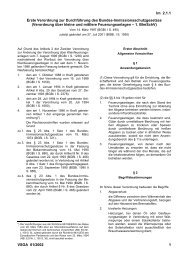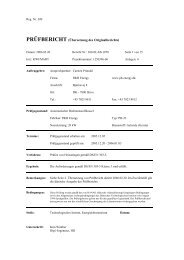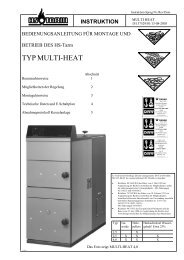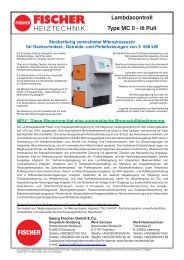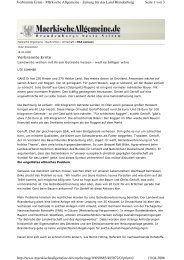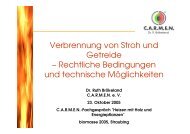Development of 0.5 MWe Scale DeSOX-DeNOX ... - Getreideheizung
Development of 0.5 MWe Scale DeSOX-DeNOX ... - Getreideheizung
Development of 0.5 MWe Scale DeSOX-DeNOX ... - Getreideheizung
Create successful ePaper yourself
Turn your PDF publications into a flip-book with our unique Google optimized e-Paper software.
6,000<br />
1,390<br />
7,000<br />
6<br />
1<br />
2<br />
8<br />
3 4<br />
5<br />
7<br />
Fig 3. Layout <strong>of</strong> the industrial scale pilot plant installed at HANJUNG. ➀ Coal<br />
combustor, ➁ Bag filter, ➂ Heat exchanger, ➃ Pulsed corona reactor, ➄ EP, ➅<br />
Sampling port for measurement, ➆ ID fan, ➇ Pulse generator.<br />
III. Results and Discussions<br />
1. Dummy load test<br />
The matching between the pulse generator and the reactor is a crucial point to reduce<br />
electrical energy loss and to optimize the formation <strong>of</strong> streamer coronas [2]. Therefore,<br />
the output impedance <strong>of</strong> the generator should match that <strong>of</strong> the reactor in order to obtain<br />
the maximum transfer <strong>of</strong> energy to a load.<br />
The generator was tested to find out the characteristics <strong>of</strong> its output impedance and a<br />
maximum transfer condition <strong>of</strong> output pulse energy to a load. Different non-inductive<br />
resistors (Carborundum Co.) were used as a load and pulse repetition rate was 1 pps.<br />
With 30 kV <strong>of</strong> HVDC output, the maximum energy transfer occurs at 35 o C, as<br />
shown in Fig. 4. The transferred energy and efficiency to the resistor per pulse were 49 J<br />
and 68 %, respectively. Transfer efficiency has the same trend as Fig. 4. The efficiency<br />
<strong>of</strong> the generator and the energy per pulse were calculated using<br />
EL<br />
η (%) = × 100<br />
(2)<br />
1 2<br />
C0<br />
⋅VDC<br />
2<br />
τ<br />
E L =<br />
∫V<br />
( t)<br />
I ( t)<br />
dt<br />
(3)<br />
0<br />
where, C 0 : the capacitance <strong>of</strong> the initial capacitor<br />
V DC : the output voltage <strong>of</strong> the HVDC supply<br />
and τ : the pulse duration.<br />
The power to a load is obtained by multiplying the energy per pulse dissipated in the







